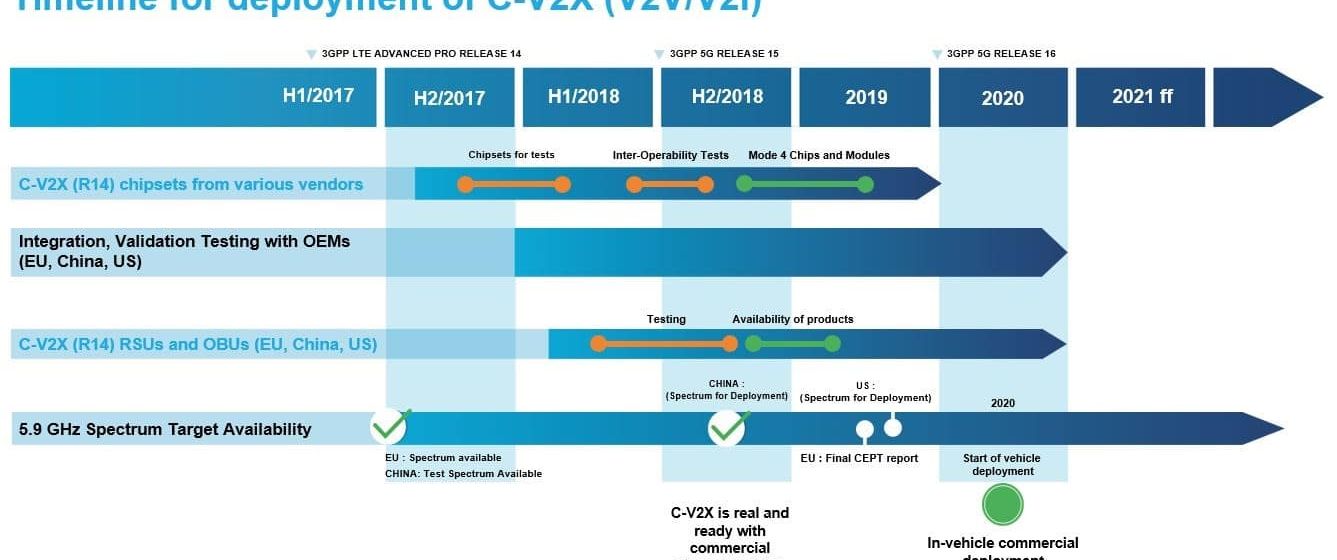
5GAA releases updated white paper on C-V2X Deployment Timeline
In December 2017 5GAA published the white paper “Timeline for deployment of LTE-V2X (V2V/V2I)” focusing on the introduction of direct communications with LTE 3GPP Rel.14. Since then Cellular-V2X (C-V2X) has gained a lot of momentum in the eco-system and we are at the verge of deploying the next generation of mobile network technology – 5G.
This updated timeline of the introduction of C-V2X covers the following topics:
- The extended use of V2N for safety-oriented services in vehicles deployed on the roads
- The comprehensive test and evaluation activities undertaken by the ecosystem consisting of OEMs, tier-1s, chip vendors, road operators, mobile operators as well as their suppliers and test equipment providers
- Outlook on the evolution towards 5G including backward compatibility
- C-V2X use cases for railways and respective test activities
- Progress on regulatory aspects
The inclusion of 2G, 3G and 4G cellular communication technologies (V2N – Vehicle2Network) into vehicles (i.e. “Connected Cars”) has been extremely successful in delivering benefits for the vehicle, the driver, the automaker and other participants in the transportation and emergency services ecosystem.
At present, more than 100 million Vehicles connected to cellular networks (V2N) are on the roads. This V2N connection is used for a wide variety of services including telematics, connected infotainment, real time navigation and traffic optimization, as well as for safety services including automatic crash notification (ACN) such as eCall, the recognition of slow or stationary vehicle(s) and informational alerts for events including traffic jams, road works and other traffic infrastructure related information, inclement weather conditions and other hazardous conditions. Several OEMs[i] share safety related warnings between their vehicles and have started to exchange this information across OEMs using e.g. services from HERE Technologies. Other initiatives to share information by interconnected backend systems are the EU financed projects ‘Nordic Way’, Talking Traffic’ and the ‘Drive Sweden projects. These projects also interconnect Road Traffic Authorities, Road operators, OEMs and smartphone applications to share traffic related info. The current understanding, also based on the European C-ITS Platform Final Report, is that the nature of these warning messages is informational, and the driver is always responsible.
C-V2X is a recent term introduced for cellular technologies optimized for transportation and connected vehicles. In particular, the C refers to both 4G LTE and 5G NR (new radio) releases of specifications, whereas X refers to multiple things’ vehicles may connect with. C-V2X includes both network-based communications that have been in use for decades, such as vehicle-to-network (V2N), as well as a new complementary mode of operation first defined in the 3GPP Release 14 specifications and approved in June 2017, which allows direct communications between vehicles (V2V), as well as between vehicle and road side infrastructure (V2I and I2V) without requiring any cellular network coverage or subscription. It can further support vulnerable road users (e.g. vehicle to pedestrian, or V2P) by integrating the direct communications technology into mobile and other devices. The direct communications functionality is used to specifically support safety critical services to reduce collisions, support automated driving, and improve traffic efficiency. LTE-V2X is the 3GPP nomenclature for direct communications as specified in releases 14 and 15, whereas 5G NR-V2X is from Release 16 onward. 3GPP R14 also added network communications improvements, delivering increased data volumes, managing greater scale of connected devices, and can further reduce latency and provide for higher levels of reliability in V2N. V2N is also technically known as Uu and refers to an endpoint such as a vehicle communicating with network infrastructure over operator licensed spectrum, whereas V2V/V2I/V2P is supported by direct communications operating on the ITS spectrum (e.g. 5.9GHz) and is known technically as PC5.
Click here to read the full version of this updated White Paper.
[i] https://www.autoblog.com/2018/05/07/volvo-cars-volvo-trucks-share-data/?guccounter=1#slide-7324246

5GAA releases white paper on the benefits of using existing cellular networks for the delivery of C-ITS
In this white paper, 5GAA provides analysis on the benefits of using existing cellular networks for the delivery of Cooperative Intelligent Transport Systems (C-ITS) services, in combination with RSU deployments. The analysis describes deployment options in terms of expenditures over a ten-year timeframe for the deployment of ITS services for vehicles communicating with infrastructure. For each option, the deployment costs, operation and maintenance cost, and connectivity costs are evaluated. The analysis highlights complementarity between cellular long-range technologies, i.e., mobile networks, using the cellular (Uu) interface and sidelink (PC5) technologies.
The paper defines the scope of services that can be reasonably delivered over cellular networks, and which services would require road side units (RSU) as an integral part of the solution. It also explains the state of the industry, highlighting examples where infrastructure services are already being provided over cellular networks today, as well as the architectural and technical considerations that are important to delivery of these services, such as spectrum, coverage, multi-operator and roaming agreements. The document details two different technical approaches: either build-out of dedicated RSU-based communication V2I infrastructure (C-V2X PC5 or 802.11p based ITS-G5/DSRC), or a mix of RSU and cellular based deployment. The cost models of these approaches are also analyzed, including the capital (CAPEX) and operational (OPEX) considerations that are important for road operators. These different models are applied to a variety of road scenarios to clearly show that the cost of delivering ITS services with existing cellular networks is significantly lower compared to widespread RSU rollout – to the extent that without this approach, it may not be reasonable to deploy V2I services in some areas at all.
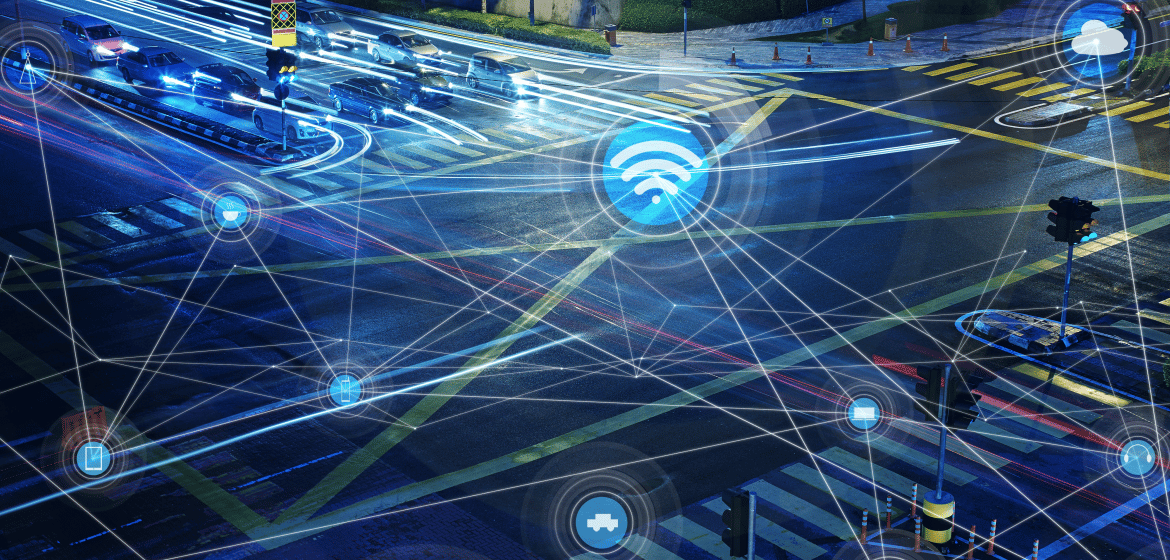
5G Automotive Association at CES 2019: Highlighting connected mobility through 5G
The 5G Automotive Association and 47 of its members will be present at CES 2019
LAS VEGAS – January 7, 2019 – The 5G Automotive Association (5GAA), the global, cross-industry organization of companies working together on future mobility solutions, will be at CES 2019 to discuss the future of transportation through 5G – including the critical role of Cellular Vehicle-to-Everything (C-V2X) deployment.
The 5G Automotive Association (5GAA) will be present at the Consumer Electronic Show (CES) 2019 on January 8-11 in Las Vegas. The global stage for innovation that has introduced breakthrough technologies over the past 50 years will have a special focus on autonomous and smart vehicles – from safety to policy roadmaps – and highlight the future of transportation through 5G. In other words, topics that 5GAA helps shaping across the world thanks to its network of over 100 members. And 47 of these leader companies of the telecommunications and automotive industries will help spread the message at the global stage event.
With a roll-out planned as early as 2020, 5GAA is pushing for the Cellular Vehicle-to-Everything (C-V2X) technology – technology that helps making roads safer while also laying the groundwork for fully automated vehicles. The technology has also been selected as a CES 2019 Innovation Award Honoree in the “Vehicle Intelligence and Self-Driving Technology” category. Some 5GAA members, like Qualcomm, will be driving discussions on the subject at high-level CES panel conferences such as SAE’s Connect2Car conference session on 5G/DSRC, Bluetooth, Wi-Fi. Audi, Ducati, Ford and Qualcomm with the support of other C-V2X ecosystem players will demonstrate advanced use cases enabled by C-V2X. Additionally, 5GAA members will highlight the achievement of significant milestones in the commercial introduction of C-V2X products.
When it comes to the application of the technology in the telecommunication industry:
- 5GAA founding member Ericsson will showcase its latest use of the C-V2X technology, demonstrating how the 4G/5G mobile networks will enable safety services for the connected vehicle and will be used to make self-driving cars a reality.
- Samsung and its subsidiary HARMAN will also showcase their scalable 5G Telematics module designed to enable wide-scale C-V2X communications.
- Working alongside the broad automotive and telecom ecosystems, Savari, Inc. will showcase its continued momentum in the development of its C-V2X real-time direct communications technology through its RSU and software stack. As an active member of the automotive association, Savari expects the 5G cellular compatible solution to bring benefits for road safety, automated driving and traffic efficiency as soon as 2020.
- Veniam and Bosch are both showcasing their jointly developed all-in-one central control unit for V2X data management and communication – together, the Veniam and Bosch solution demonstrates how to move massive amounts of data to, from and between vehicles on the road.
- With a deep focus on the technology, Wistron NeWeb Corporation (WNC) will showcase its 5G and C-V2X system and modular solutions designed to enable eco-system partners to promptly rollout in-vehicle and infrastructure applications.
- Continental will be showcasing a flexible 5G hybrid platform that allows both mobile network communication and rapid and reliable direct exchange of data. Depending on regional requirements and customer preferences, the platform enables C-V2X as well as Dedicated Short Range Communication. These benefits are being realized with a first customer award for this 5G-Hybrid-V2X solution.
As 2019 stands for the year for the connected cars ecosystem to prepare the ground for mass roll-out of the technology in 2020, 5GAA will be driving 5G innovation at CES as an official partner at the Allied Association corner located in South Hall 1. 5GAA representatives, including CTO Maxime Flament, will be available for briefings and interviews.
About 5GAA
The 5G Automotive Association (5GAA) is a global cross-industry organization of companies from the automotive, technology and telecommunications industries (ICT) working together to develop end-to-end solutions for future mobility and transportation services.
Created in 2016, the association includes over 100 members whose mission is to develop, test and promote communications solutions, initiate their standardization and accelerate their commercial availability and global market penetration, to address society’s connected mobility and road safety needs with applications such as automated driving, ubiquitous access to services and integration into smart city and intelligent transportation. For more information, visit 5GAA’s website, LinkedIn and Twitter pages.
Contact
Margaux Demeyer – Communications & Marketing
Tel: +32 (0)25882430
Mail: margaux.demeyer@5gaa.org
Marketing and Communications Team
Email: marcom@5gaa.org

Multi-stakeholder Statement on Preserving 5.9 GHz
The Association of Global Automakers, The Alliance of Automobile Manufacturers, 5G Automotive Association, Intelligent Transportation Society of America, and the American Association of State Highway and Transportation Officials issued the following statement in response to the recent filing by NCTA-The Internet & Television Association suggesting that spectrum reserved for transportation safety services should be repurposed:
The Association of Global Automakers, The Alliance of Automobile Manufacturers, The Intelligent Transportation Society of America, The 5G Automotive Association and The American Association of State Highway and Transportation Officials strongly support preserving the full 5.9 GHz band for transportation safety use, as it has been allocated.
Our members are actively developing technologies, and own and operate critical highway and other transportation infrastructure that connects vehicles to vehicles, to other road users, and to their environment to help reduce crashes. Connected vehicle and infrastructure technology includes vehicle communication with bicyclists, pedestrians, traffic lights, and advanced alerts of hazards like ice on roadways, commonly known as vehicle-to-everything (V2X). Additionally, they can enhance automated driving systems, which hold the promise to provide numerous economic, environmental, and societal benefits, such as decreased congestion and fuel consumption, and increased access for the elderly and disabled.
The entire 5.9 GHz band is needed to achieve the full benefit of these communication technologies in the years to come. These safety innovations require dedicated spectrum to ensure they work right every time without signal interference. Millions of dollars have already been invested in this effort, including incorporating connected vehicle technologies into infrastructure.
We are on the cusp of a major breakthrough in vehicle connectivity and safety innovations. With significant past and present investments in connected vehicle innovations, V2X technologies are already being deployed for the purposes of improving road safety. This will only continue moving forward. With 37,133 deaths on U.S. roadways last year alone, we must take every opportunity to save the lives of road users. Connected vehicle technologies offer the U.S. a powerful set of tools to save lives, but only if these technologies are given the ability to progress. We support protecting the entire 5.9 GHz band for transportation safety applications. Any unlicensed use in the band should be done without harmful interference to the incumbent technology or other intelligent transportation systems technologies.
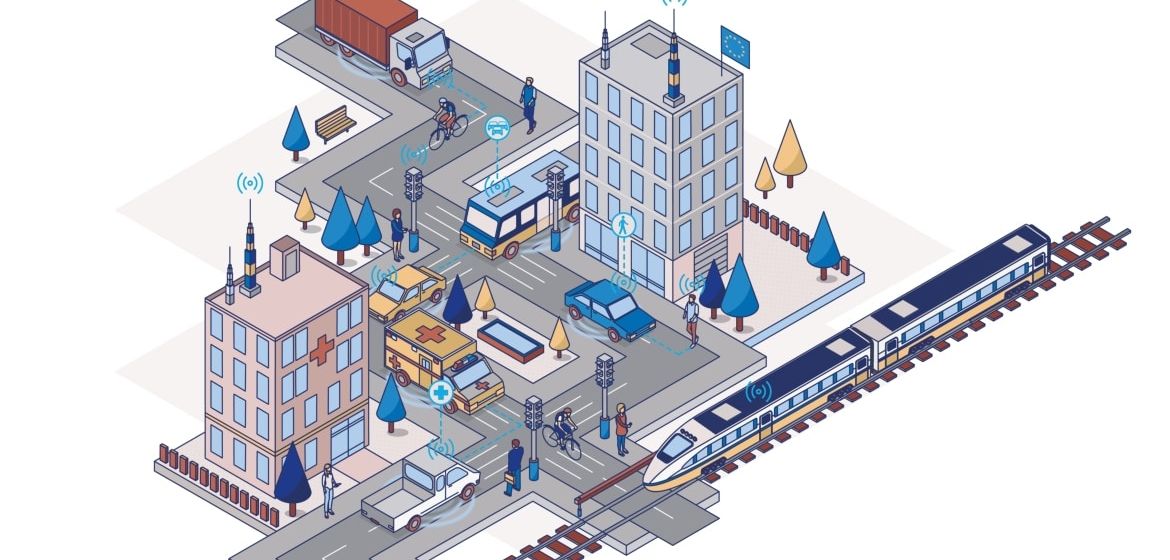
Europe’s leadership in connected and automated driving depends on technology-neutral, innovation-oriented policies
Dear Minister,
Serious concern has arisen in the telecoms and transport industries over the restrictive content of the forthcoming Delegated Act on Cooperative Intelligent Transport Systems (C-ITS). Although it is close to completion, the text still does not lay down the technology-neutral framework urged by the CEOs of 24 members of our associations (signatories included BMW, Daimler, Deutsche Telekom, Ericsson, Ford, Groupe PSA, Nokia, Telefonica and Vodafone) in their letter to President Juncker in July 2018[1].
Despite a welcome acknowledgement of cellular technologies, the draft Delegated Act only contemplates the Cellular Vehicle-to-Everything (C-V2X) technology family in the framework of a future revision of the Act in up to three years’ time, with no guarantee to date that a level playing field will be ensured with respect to compatibility and interoperability requirements.
The current draft effectively endorses Wi-Fi based communication (known as “ITS-G5”) as the baseline technology for connected cars in the EU, at the expense of a mature and standardised alternative[1]: LTE-V2X (which is the current realisation of C-V2X). We believe this contradicts the principle of technology neutrality and will prove to be a very costly missed opportunity for Europe.
Indeed, LTE-V2X is regarded internationally as the foundation stone which will pave the way towards the most advanced safety services enabled by 5G, in particular for vulnerable road users. Only C-V2X offers such a clear evolutionary roadmap starting with LTE-V2X today and evolving into 5G-V2X tomorrow, making it the only future-proof technology.
A decision exclusively favouring Wi-Fi technology today should thus be carefully considered. It would bear negative long-term consequences for Europe, since Wi-Fi offers no prospect of compatibility with 5G. A costly migration path would be required, resulting in significant sunk costs. It would stall C-V2X roll-out and investments in 5G for automotive and alongside the road network would be adversely affected.
LTE-V2X must be allowed to succeed as the first building block en route to the full realisation of 5G potential, ensuring the competitiveness of key industry verticals such as automotive as well as the telecom sector. A wrong decision at this critical juncture would put in jeopardy Europe’s leadership and investment in 5G.
Connected vehicle and roadside infrastructure technology is evolving at a very fast pace. LTE-V2X field tests and deployment projects are under way in many EU countries as well as globally with the first market introductions foreseen in 2019, within the same timeframe as the Delegated Act publication.
Leveraging all the previous work from European standardisation organisations, C-V2X offers unique benefits as a single technology platform, combining both direct short-range (not requiring network coverage or a subscription) and long-range modes.
It will, unhindered, significantly improve road safety in Europe through direct vehicle-to-vehicle, vehicle-to-infrastructure and, vehicle-to-network communication, but also provide new vehicle-to-pedestrian applications owing to its unique smartphone integration capacity, thereby reducing vulnerable road users’ casualties (43% of EU road fatalities in 2017)[1].
C-V2X also provides the fastest way to reach large-scale penetration of C-ITS: all new vehicles are expected to feature embedded cellular connectivity by 2021-2022. Many OEMs have already deployed some Day 1 C-ITS services using existing 3G/4G networks and LTE-V2X long-range mode.
We strongly believe that Europe should capitalise on these early deployments and would gain substantial economic benefits by maximising the synergies between transport and telecom network infrastructures. Today, LTE network population coverage averages 97.9% in Europe (89.9% of rural EU households) with a rapid year-on-year increase[2], whereas ITS-G5 deployment has not yet begun.
In addition, consumer 5G is rapidly moving from trials to early commercialisation. Between 2018 and 2020, 48 countries will launch 5G mobile services across North America, Europe, the Middle East and Asia-Pacific.[3]
This is not about promoting individual companies that are about to launch their respective products. It is about creating the right framework which will support Europe to make the best technology choices in the future, to achieve our common objective: making the roads safer for all.
We encourage you to support a truly technology neutral approach to C-ITS through a Delegated Act inclusive of LTE-V2X, as it holds the promise of better safety. C-V2X is close to deployment in every world region as our entire ecosystem has stepped up its efforts to be market-ready in the upcoming months. However, it is absolutely critical for our industries that the EU regulatory framework provides sufficient legal certainty in order to pursue and accelerate current roll-out plans for C-V2X.
Afke Schaart Johannes Springer Lise Fuhr
VP and Head of Europe, Director General, 5GAA Director General, ETNO
Russia and CIS, GSMA
[1] CEO Letter to President Juncker on connected car legislation
[2] Cf. Annex to this document
[3] Road Safety in the EU – Trends, statistics and main challenges
[4] Broadband Coverage in Europe 2017, European Commission
[5] GSMA intelligence

Connected car technology: Cellular V2X outperforms DSRC/ITS-G5 in comprehensive tests as mobility industry moves towards 5G
Munich, 9 November 2018: As regulators worldwide are looking into future rules for connected cars technologies, the 5G Automotive Association has conducted tests to compare the performance of 802.11p/DSRC (known in Europe as ITS-G5) and Cellular V2X PC5 radio technologies in delivering V2V (Vehicle-To-Vehicle) safety messages.
The test results show that Cellular Vehicle-to-everything (C-V2X) direct communications technology, consistently – and in many cases overwhelmingly – outperforms 802.11p/DSRC. With a natural evolution path towards the low latency and high bandwidth benefits of 5G NR, C-V2X also demonstrated superior performance in several dimensions, including the following:
- Enhanced reliability over extended communications range;
- Better non-line-of-sight performance; and
- Greater resiliency to interference (e.g. arising from other devices)
These performance advantages are particularly important in the most difficult environments such as non-line-of-sight scenarios (e.g., around a corner, highway queue forming etc.), where resident onboard sensors and radars have certain limitations.
Reliable and timely radio performance is a crucial requirement that all those with a stake in transport safety depend on to deliver critical safety applications. Such test procedures are a prerequisite to comparing the available radio technologies, and the results are very clear: C-V2X direct communications (PC5) performs better. C-V2X is commercially available and reuses the decades’ long investment into protocols and upper layer applications to improve safety, deliver traffic efficiency, and support automated driving.
The design and execution of each experiment were set up to ensure that environmental conditions, radio frequency parameters, system integration details, and physical structures were consistent when comparing 802.11p/DSRC and C-V2X direct communications.
As yet another strong signal about the global momentum behind C-V2X, 5GAA today counts 102 members (40% from Europe, 35% Asia-Pacific and 25% Americas), an increase of 60% since January 2018, quite a movement for a 2-year-old organization.
5GAA brings together the automotive and ICT industry leaders from all world regions among which carmakers, Tier-1 suppliers, mobile network operators, chipset manufacturers, test equipment vendors, telecom suppliers, and traffic signal suppliers in order to continue C-V2X field tests and to accelerate in-vehicle and infrastructure commercial deployments, foreseen beginning in 2019 globally.
Maxime Flament, CTO of the 5G Automotive Association (5GAA) said “these test results demonstrate that C-V2X direct communications, is today’s most cutting-edge technology for connected and automated driving, and the best to finally deliver upon safety and traffic efficiency. Hence why C-V2X ecosystem is growing so rapidly – the 5G Automotive Association has now more than 100 members who all believe in C-V2X as the future of mobility.”
Read the full report here
See the full webinar here
Notes to Editors:
The V2V radio performance tests were conducted by 5GAA members over a period spanning six months from March through September 2018.
Vehicle-to-Everything (V2X) communication is an essential enabler of cooperative, connected and automated mobility that can be supported today by two concurrent technologies: 802.11p (Wi-Fi based) and Cellular V2X (C-V2X).
C-V2X is the family of cellular technologies designed for automotive applications, standardized by 3GPP, the global telecommunications standard development organization.
C-V2X combines on a single technology platform a direct short-range mode operating over ITS spectrum (not requiring any network coverage or subscription) and a long-range mode using traditional cellular networks operating over the mobile network operator licensed spectrum.
The above-mentioned tests were conducted using only the C-V2X direct short-range communication mode without any network involvement.
C-V2X current realization is based on LTE-V2X (3GPP Release 14, completed in March 2017), and will evolve into 5G-V2X (also called 5G New Radio or “5G NR”) to deliver additional capabilities and support new services (as Release 16, to be completed by 3GPP by end 2019).
About 5GAA
The 5G Automotive Association (5GAA) is a global cross-industry organization of companies from the automotive, technology and telecommunications industries (ICT), working together to develop end-to-end solutions for future mobility and transportation services. Created in 2016, the Association is comprised of over 100 members whose mission is to develop, test and promote communications solutions, initiate their standardization and accelerate their commercial availability and global market penetration, to address society’s connected mobility and road safety needs with applications such as automated driving, ubiquitous access to services and integration into smart city and intelligent transportation.
Media Contact:
Marketing and Communications Team
Email: marcom@5gaa.org
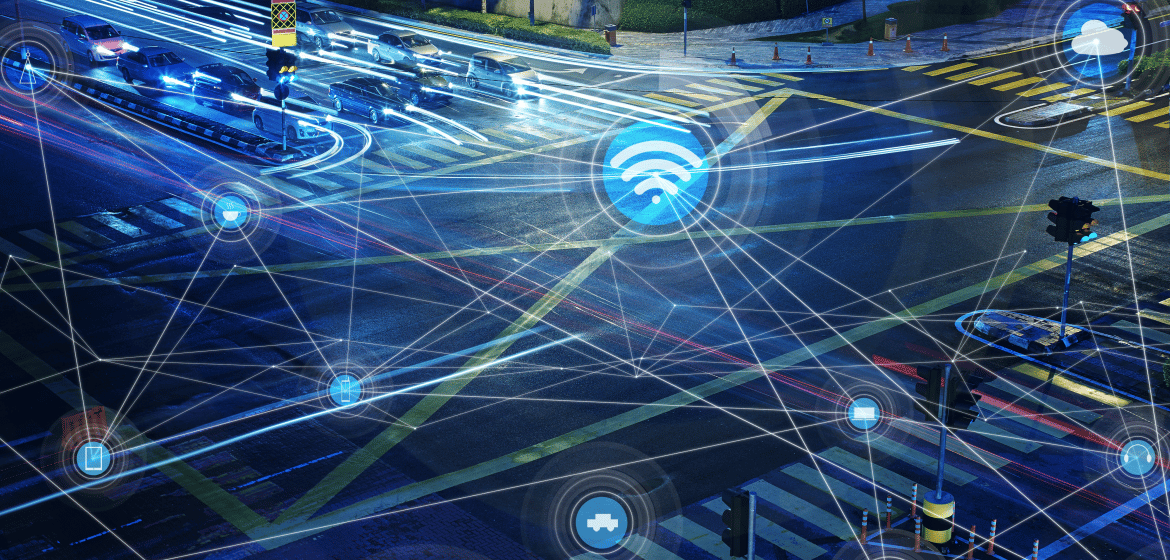
5GAA Report shows superior performance of Cellular V2X vs DSRC
The 5G Automotive Association (5GAA) announces the publication of a tests and results report comparing DSRC and Cellular V2X (C-V2X) radio technologies for their suitability to deliver broadcast V2V (Vehicle-To-Everything) safety messages.
The main conclusion of the report confirms that C-V2X significantly outperformed DSRC in various key areas.
Reliable and timely radio performance is a crucial requirement that the transportation safety stakeholder community, including vehicle manufacturers, road infrastructure owner-operators, standardization bodies and regulators depend on to deliver critical safety applications.
The V2V radio performance tests were conducted over a period spanning six months from March through September 2018. The test results reported here are intended to provide this community with an informed basis for making important decisions on the choice of the air interface to deliver standardized messages (e.g., Basic Safety Message or BSM). Therefore, great care was taken in the design, setup and execution of each experiment to ensure that environmental conditions (weather, time of day, temperature), RF parameters (antennas, power, cables), system integration details, and physical setup (track, obstructions, antenna placement) were consistent when comparing DSRC and C-V2X.

5GAA Webinar: Comparing DSRC & C-V2X Technology
On 17 October at 5PM (CET) 5GAA sponsored an exclusive webinar on Talking Cars: Field Test Results Comparing DSRC & C-V2X Technology.
Register here to access the webinar recording
According to World Health Organization figures, more than 1.2 million casualties occur globally as a result of traffic incidents. As vehicles add more sensors to improve safety and advance the readiness of automated driving, vehicle-to-everything communications (V2X) are expected to significantly enhance road safety. As a result, global governments and industry (automotive and telecom) are carefully evaluating two different V2X technologies: IEEE 802.11p-based radio DSRC/ITS-G5 and 3GPP-based C-V2X. 802.11p is an older radio technology, based on specifications dating to 1999, and has been researched over the past decade, whereas C-V2X is a newer radio technology benefiting from many advances in communications.
This 5GAA-sponsored webinar will review how each of the technologies performed in an apples-to-apples comparison, executed by Ford and Qualcomm Technologies, Inc in US lab and field testing.
This webinar agenda included:
- The reliability, communication range and latency of each V2X technology under the same test conditions
- Performance comparison in congested environments
- Resiliency of each technology to adverse deployment conditions, including interference
Speakers:
Steve Bell, Senior Analyst, Heavy Reading
Maxime Flament, CTO, 5GAA
Gautam Savarkar, Senior Director, Engineering, Qualcomm Technologies, Inc
Ivan Vukovic, Technical Specialist, Ford Motor Company

5GAA invited as special guest to World Internet of Things (IoT) Expo on 15-18 September 2018
The 5G Automotive Association (5GAA) was invited as a special guest at the 2018 World Internet of Things (IoT) Expo, scheduled from Sept 15-18 2018. The Expo themed on “Digitalized New Economy, IoT-driven New Times”, included a large ministerial summit, 10 high-level fora, a large exhibition, and series of 16 sponsored events.
Wuxi is one of the major Chinese city who have started V2X deployment in China. In total, more than 220 intersections and hundreds of road-side sensors are already connected to a city-wide cloud. All intersections send their signal phase and timing via the China Mobile LTE network as well as via short-range LTE-V2X PC5 connectivity. The WIoT2018 gathered ten vehicle manufacturers among them Audi, SAIC, FORD, Peugeot-Citroen, Volvo Cars, Volkswagen, Donfeng, GM, Toyota, etc. Many vehicle application were using primarily the mobile network while others were combining both cellular and short-range PC5 communication. Road-side and in-vehicle connectivity was mainly provided by chipset and radio technology vendor HUAWEI but others like Qualcomm and Datang were actively contributing to the demonstration.
5GAA CTO, Dr. Maxime Flament, gave a keynote at the high-level Intelligent Transportation & Internet of Vehicles Forum. He insisted on the importance of the C-V2X deployment in Wuxi city as a model deployment for many government even outside China. It is important that the evaluation done in Wuxi can reach out to all government in the world in order to encourage a harmonized deployment of V2X around the world. The audience showed a great interest for C-V2X technology combining both vehicle short-range and cloud connectivity.
The vehicle manufacturers and their business partners are now preparing to the next big Chinese event sponsored by SAE China and IMT-2020: A large scale interoperability testing event on 6-8 Nov 2018 in Shanghai. Interoperability test will be performed at chipset, radio and vehicle application levels.
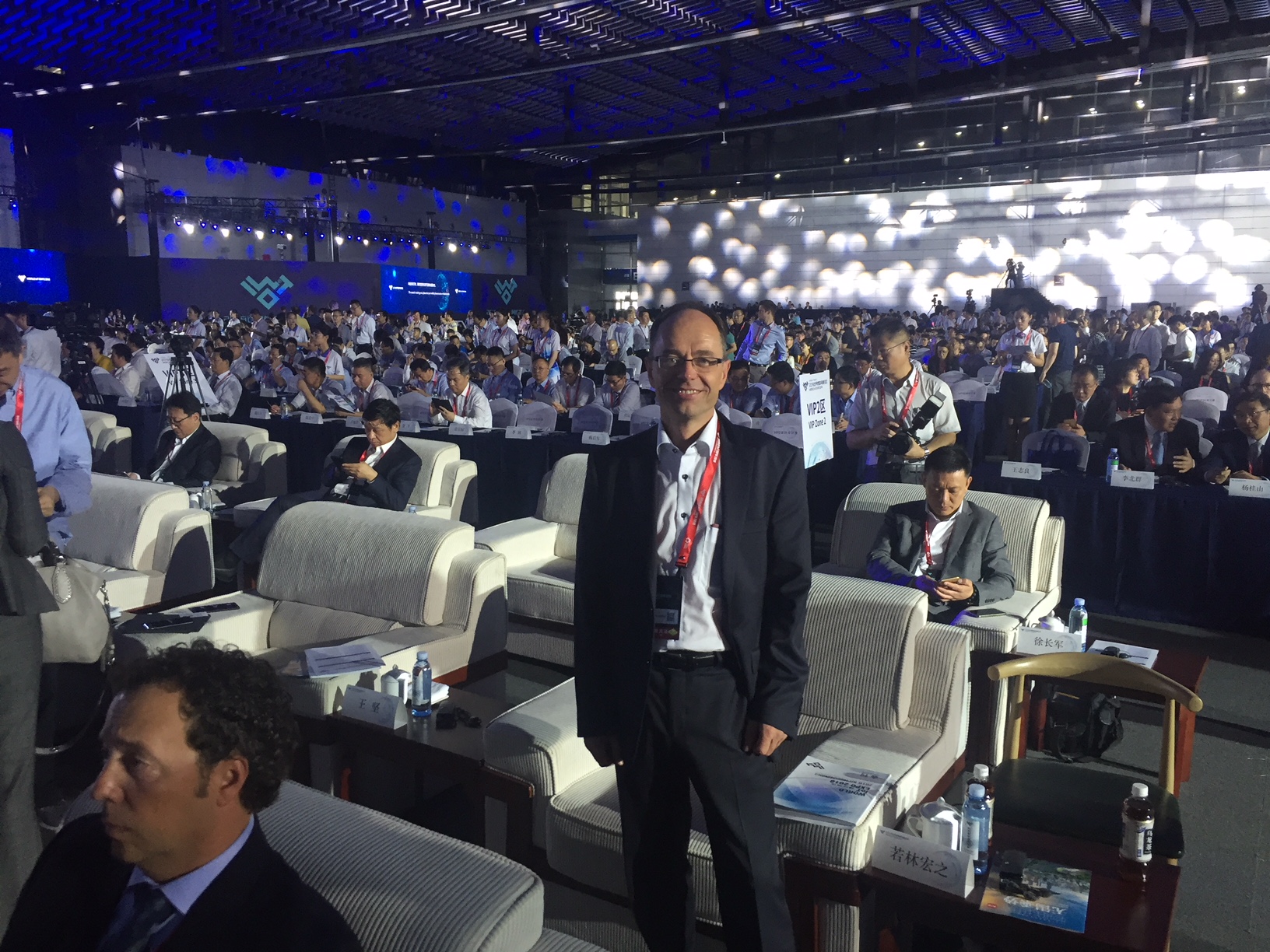
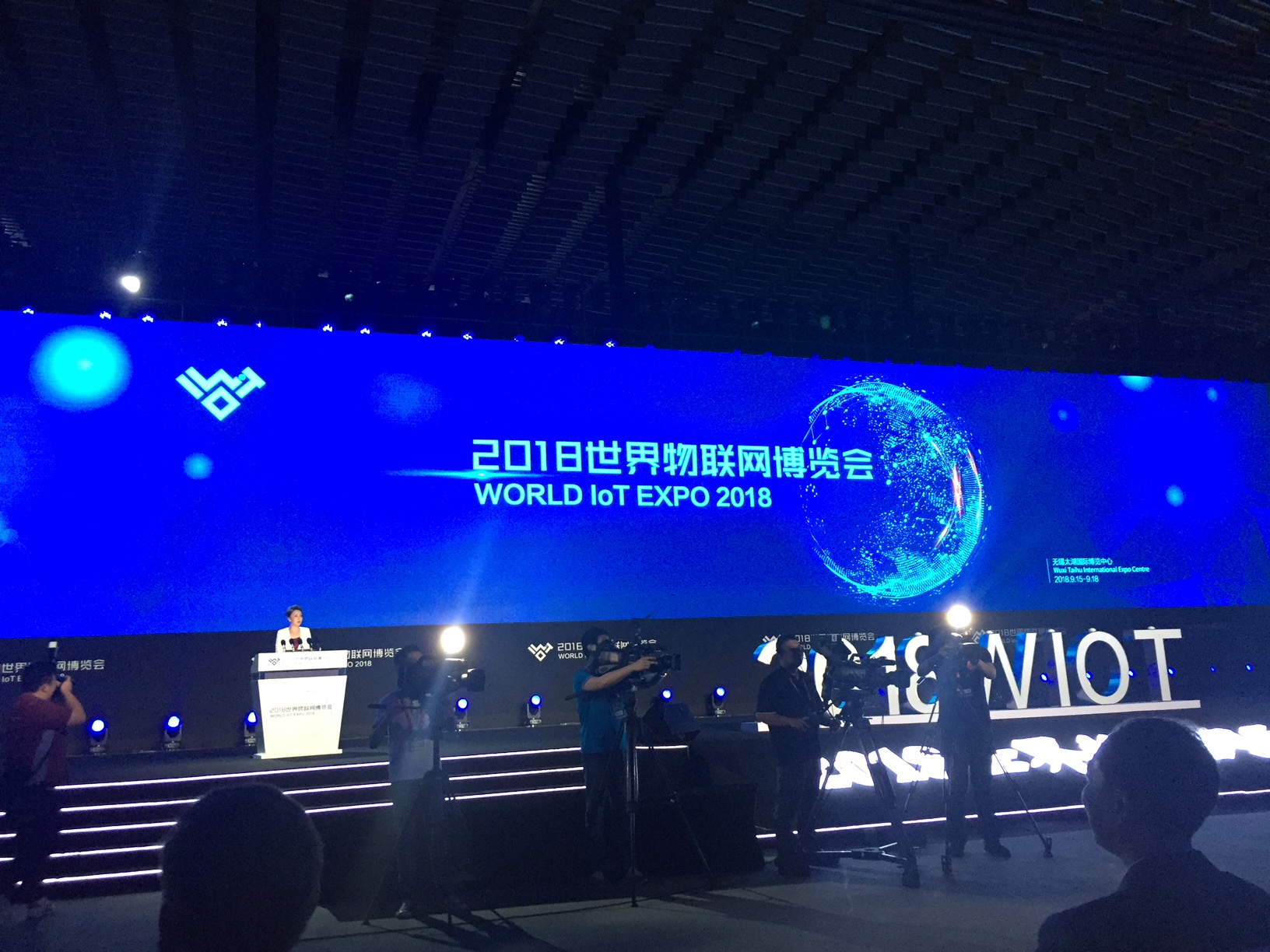
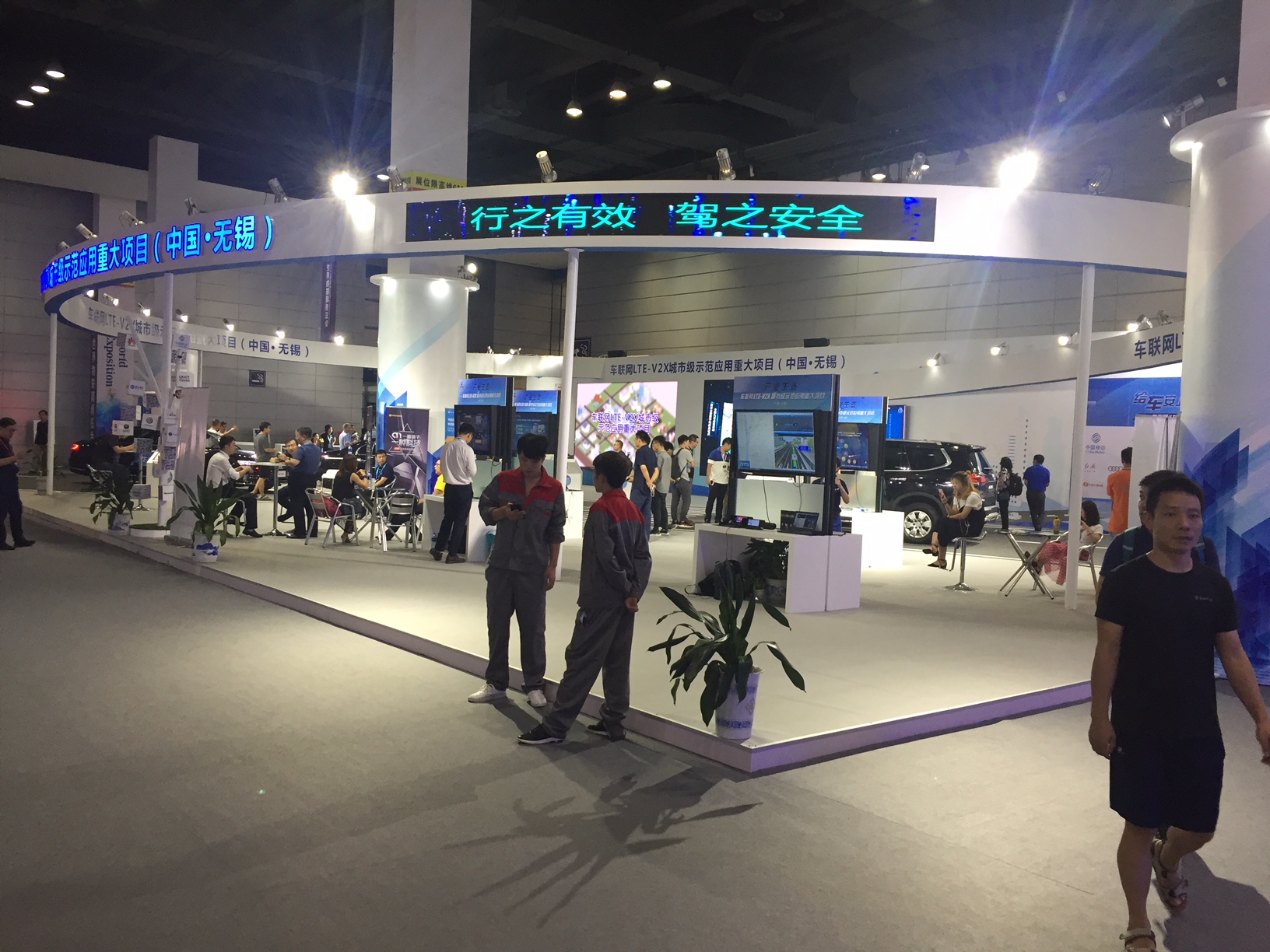
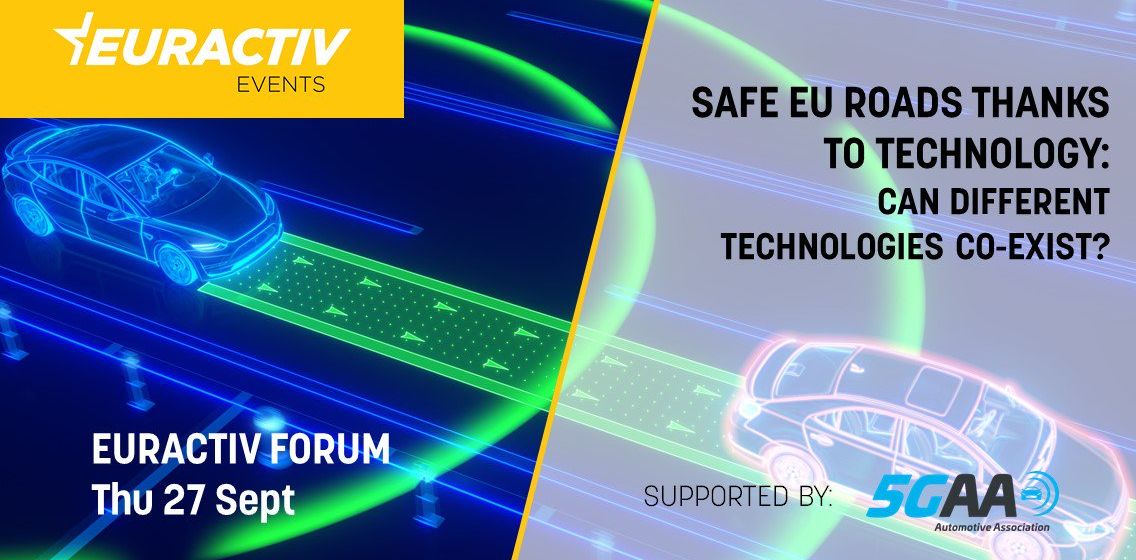
5GAA and Euractiv to introduce “Safe EU Roads Thanks to Technology” Forum – Brussels, 27 September 2018
On 27 September, the 5G Automotive Association will plunge into the debate on technologies for road safety as it takes part in the Euractiv Forum “Safe EU Roads Thanks to Technology” as an event partner.
The EU aims at being a world leader for fully automated and connected transport systems, making it safer, cheaper and more accessible. In order to reduce the number of lives lost on EU roads, the EU Commission is currently conveying new models of vehicles equipped with advanced safety features. This initiative contributes to the EU’s long-term goal of moving close to zero fatalities and serious injuries by 2050.
As the Cellular-Vehicle-To Everything (C-V2X) technology and its evolution to 5G will enable life-saving communications, the forum will be a source of debate further reinforcing the discussion on the subject. The focus will encompass the cost of deploying the C-V2X technology, the path to 5G, the challenges associated with new technologies as well as the regulations ensuing from its development.
As a major association representing more than 100 companies from the automotive and telecommunications industries, 5GAA is proud to foster the debate among relevant stakeholders, driving towards building an enhanced 5G-driven regulated ecosystem.
Join us on Thursday 27 September from 17:00 to 20:00 at the Euractiv Network Office in Brussels and attend 5GAA’s CTO Maxime Flament Speech as he opens the Forum.


